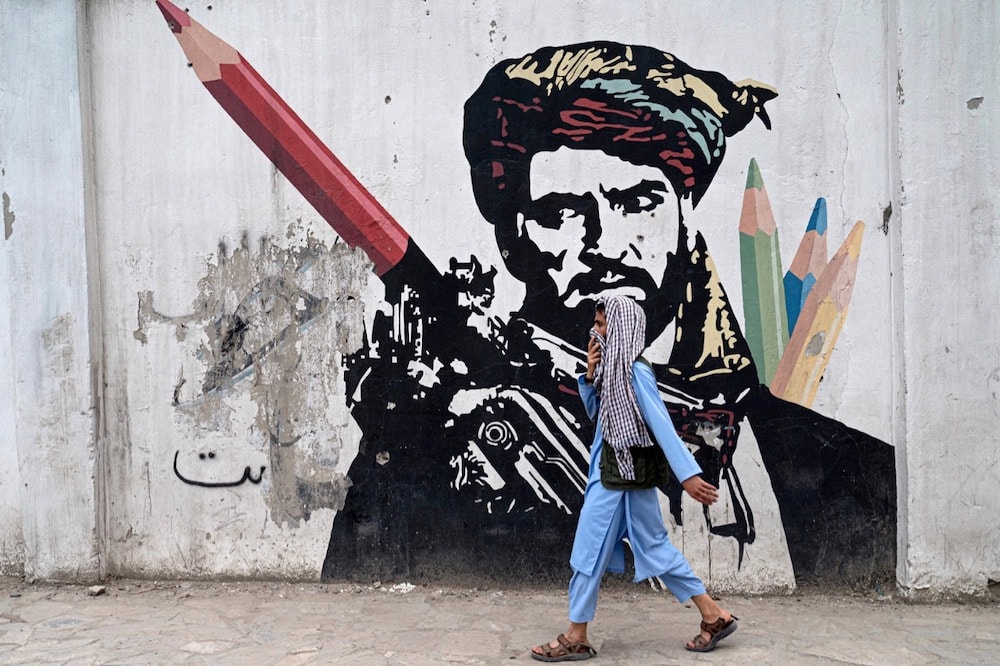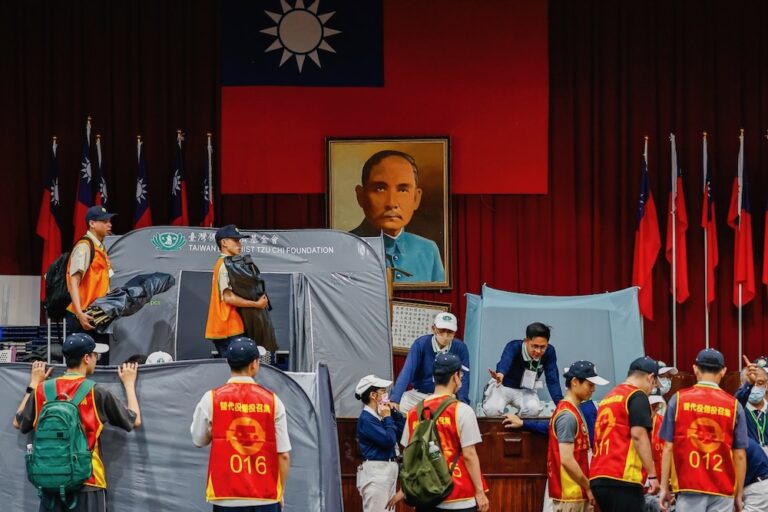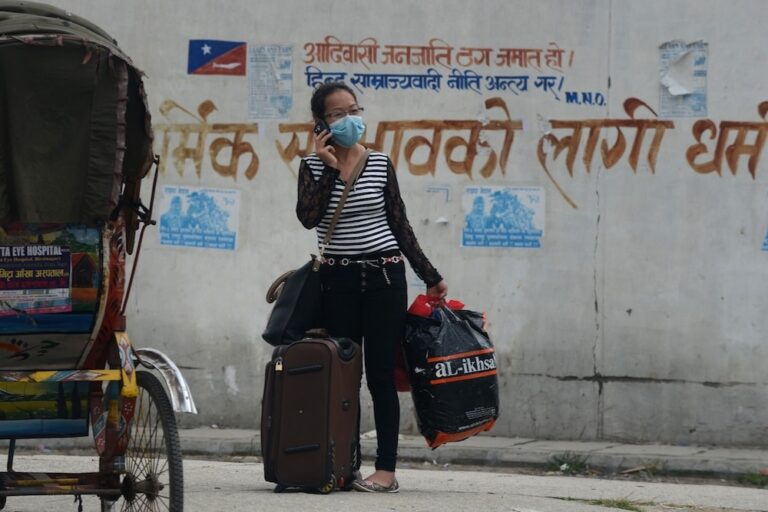The report, "Connecting the Dots: Artist Protection & Artistic Freedom in Asia", captures growing anxiety over efforts to stifle artistic expression in 19 countries in South, Southeast, Central, and East Asia
This statement was originally published on pen.org on 12 October 2022.
Report captures growing anxiety over efforts to stifle artistic expression in 19 countries in South, Southeast, Central, and East Asia
Threats against free expression and artistic freedom in Asia are rising, with artists increasingly vulnerable to violent attacks, censorship, and persecution, stemming in some cases from laws restricting digital security rights and suppressing criticism of government and ruling parties, according to a new publication from PEN America’s Artist at Risk Connection (ARC), in partnership with the Mekong Cultural Hub (MCH) and the Asian Forum for Human Rights and Development (FORUM-ASIA).
The report, Connecting the Dots: Artist Protection & Artistic Freedom in Asia, captures growing anxiety among artists and creative practitioners across South, Southeast, East, and Central Asia around stringent security laws, the lack of unencumbered spaces for free expression, and the impact of authoritarian measures to crack down on artistic production and criminalize free expression.
Connecting the Dots presents key findings from a closed-door virtual workshop held in November 2021 with 25 people who shared the belief that cultural rights are human rights.
Key findings include:
- As threats to artistic freedom in Asia intensify, it is critical for artists to develop self-care protocols and build strong relationships with allies to navigate the mental and emotional toll of risk and build access to support mechanisms.
- Because perceptions diverge over what artistic freedom means and how Asian artists and cultural practitioners experience it due to cultural and political differences among countries, it is important to develop a shared definition, articulate common values, account for varied experiences, and encourage artists to become more involved in policy-based roles and legislation.
- Relocation mechanisms too often rely on moving artists to another part of the world rather than elsewhere in Asia. Because regional relocation is less expensive, often poses fewer logistical hurdles, and allows artists to remain in a culturally familiar environment, it should be prioritized when artists seek to relocate.
In addition, the publication offers the following recommendations to help cultural institutions, human rights partners, and civil society shape a basis for actionable steps to protect artists:
- Develop and strengthen artist-enabled networks in a manner that is sensitive to the risk and trauma they experience.
- Offer virtual mentoring sessions that address topics like financial security, digital safety, and emotional resilience.
- Create a digital toolkit for artists in remote locations, empowering them to expand their communities and use digital resources to further their reach.
- Deploy digital resources in a more concerted effort to track, map, and monitor cases of censorship.
- Rethink and reframe the definition of “artist-activist,” especially at human rights organizations, to smash stereotypes of how artists are viewed and perceived.
“In the last two years, we have witnessed a steady rise in threats and persecution of artists across Asia, a trend where governments are deliberately targeting and silencing cultural rights defenders,” said Julie Trébault, director of the Artists at Risk Connection (ARC) at PEN America. “The situation in Asia is very dire. Now more than ever, it is both essential and urgent to facilitate dialogue between the human rights defenders, cultural, and legal stakeholders in the region.”
Trébault said the report captures discussions from artists in the aftermath of the fall of Afghanistan, as well as other deeply concerning repression in Myanmar, India, Malaysia, Pakistan, Hong Kong, Singapore, Thailand, and Taiwan.
She said: “This publication illuminates the realities on the ground and challenges endured by artists in some of the world’s worst conflict zones and areas where growing socio-economic and political inequalities are exacerbated by the deliberate efforts of authoritarian regimes to extinguish free speech and democratic discourse.”
Artists in Asia continue to play a powerful role in shaping democratic movements in their countries. Despite their precarious position, artists such as muralists like Art Lords and graffiti artist Shamsia Hassani in Afghanistan were at the forefront of protests against the Taliban takeover in August 2021, using their work to draw attention to the unfolding humanitarian crisis in the country. In Malaysia, artists such as Fahmi Reza create art to assert the need for accountability by the government and the monarchy; these artists have been met with harassment and threats of persecution.
More recently in Myanmar, artists such as rapper and former lawmaker, Pho Zeya Thaw, were among others brutally executed for their pro-democracy activism. In addition, artists have used their work to question the status quo and highlight inequities and discrimination meted out to women, LGBTQ+ people and members of marginalized groups. In India, artists face severe community backlash for any work that is critical of gender-based violence and supportive of minority rights. In Sri Lanka, creative expression has been embedded in the mass protests sweeping the capital as is evident from the work of artist collectives like the Fearless Collective, who created a mural that has taken centre stage in the Gota Go Gama site of protests.
A Philippines-based session facilitator, cultural researcher, and activist said: “We are missing out on the details of each layer or stage of repression as it happens. We are missing out on capturing how swiftly things are changing for many of us in our contexts, whether it’s in the state of our un-freedom in general or in terms of artistic repression in particular.”
“The agents of oppression, and the methods used to stifle artists’ freedom are constantly evolving,” said Kathy Rowland, co-founder of Singapore media company ArtsEquator. “So, too, are the ways that artists in Asia challenge and circumvent these attacks on their right to free expression. This latest publication provides those in Asia, as well as those outside, with the latest information and connections necessary to support the integrity of artistic freedom in the region.”
Connecting the Dots builds on findings from ARC’s 2020 publication, Arresting Art: Repression, Censorship, and Artistic Freedom in Asia along with its limited run podcast series, Creating Artistic Resilience: Voices of Asia, which featured conversations with five artist activists from Myanmar, Hong Kong, Philippines, Malaysia, and Bangladesh.
“The fragile state of artists’ wellbeing is of growing concern,” said MCH managing director Frances Rudgard. “The stressful environment in which they operate, navigating an increasingly complex web of direct and indirect limits to their artistic freedoms, against a backdrop of financial insecurity and difficulty accessing essential information, support and resources, is not sustainable. More must be done to take care of cultural workers or the whole sector is at risk.”
According to representatives from FORUM-ASIA, “Freedom of expression is a human right that is often neglected and violated in Asia, and many artists continue to face censorship, ostracization, and repression due to their work. At the Asian Forum for Human Rights and Development, we recognize the close connection between artistic freedom and human rights work, and that often the suppression of one leads to the suppression of another. The report Connecting the Dots is a much needed publication that captures the prevalence of repression in Asia and ways to overcome the challenges.”
Connecting the Dots is available online and downloadable as a PDF.
About the Artists at Risk Connection
PEN America leads the Artists at Risk Connection (ARC), a program dedicated to assisting imperiled artists and fortifying the field of organizations that support them. ARC recently released A Safety Guide For Artists, a resource that offers practical strategies to help artists understand, navigate, and overcome risk, and features an interview with Cuban artist Tania Bruguera about the state of free expression on the island. If you or someone you know is an artist at risk, contact ARC.



